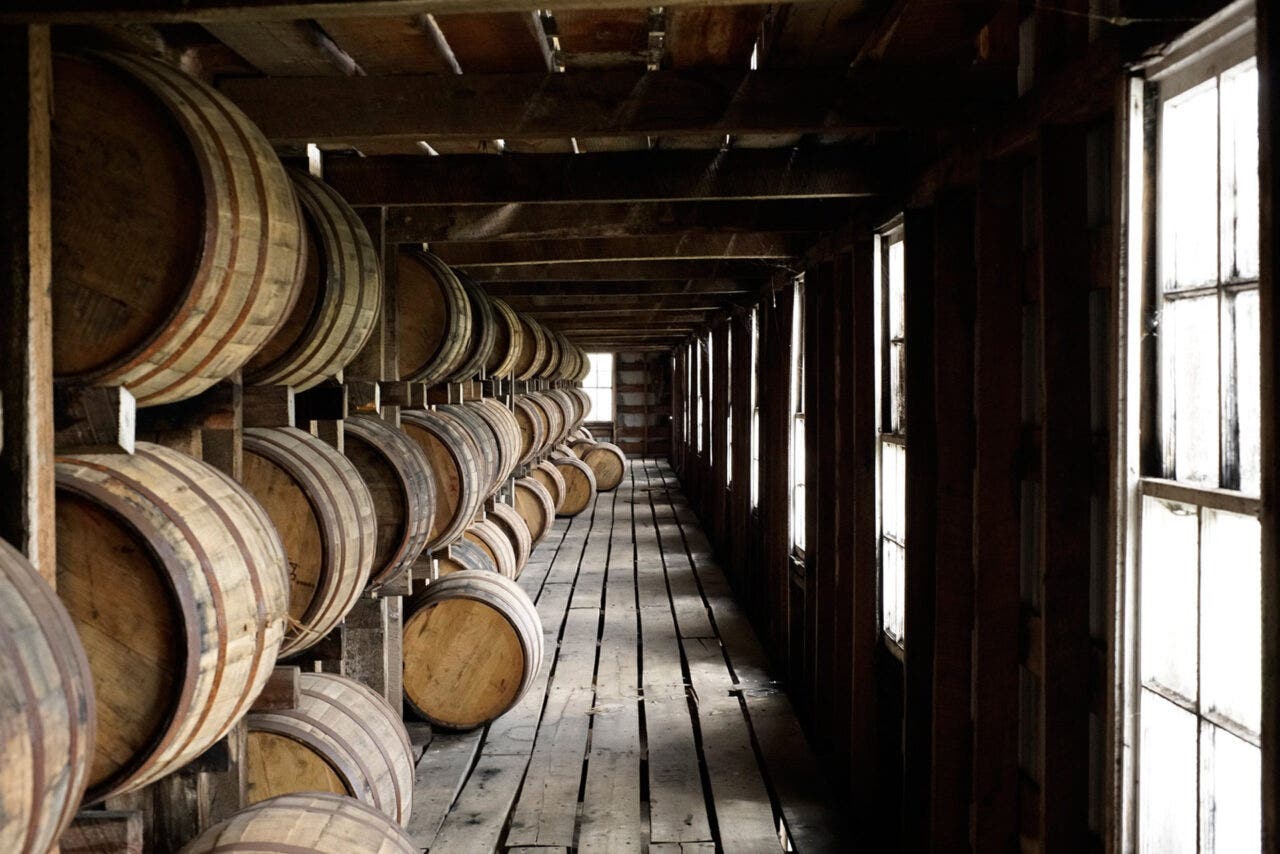It seems like an innovation in spirits hits shelves every day. Matured whiskey to Metallica’s music. Gin that changes colors. There are cold-brew liqueurs, bottles promoted by marquee movie stars, and spirits made sans alcohol. But one of the most notable kinds of spirits isn’t new at all.
The bottled-in-bond designation is steeped in more than a century of American distilling heritage. It arguably holds spirits to a standard higher than most Scotch and more scrupulous than Cognac’s designation.
If the term seems mysterious, you’re not alone. Many have no idea what “bottled-in-bond” means.
Consider bottled-in-bond (or bonded) the “craft” certification of today.
“Bonded whiskey is a mark of provenance and transparency,” says Colin Spoelman, co-founder/head distiller of Kings County Distillery. Spoelman’s distillery in Brooklyn, New York. “It’s very relevant to distillers today.”

What does “bottled-in-bond” mean?
In the late 1800s, many whiskeys were of questionable provenance. Booze was bought in barrels, not bottles, which made it easy to tweak and taint.
Spoelman says that Kentucky distillers were undercut by those from Chicago that sold a column-distilled neutral spirit, like vodka. Wholesalers would blend or finish the spirit, often with artificial flavors and additives to stretch the whiskey.
“The worst, glycerine, caramel coloring, wood chips and sometimes, formaldehyde, [were used] to give the whiskey the vague taste of properly made, traditional whiskey,” he says.
Amid pressure from Kentucky distillers, the federal government set a standardized designation. “Bottled-in-bond is one of the earliest examples of a consumer protection law,” says Spoelman.
The bottled-in-bond designation is steeped in more than a century of American distilling heritage. It arguably holds spirits to a standard higher than most Scotch and more scrupulous than Cognac’s designation.
The bottled-in-bond designation mandates that brands clear numerous rigorous hurdles. The spirit must be aged for at least four years and bottled at precisely 100 proof (50% abv). It must be made by one distiller at a single distillery in one season, then aged in a bonded warehouse.
“Because of that, bottled-in-bond is a unique expression of location,” says Maggie Campbell, president/head distiller at Privateer Rum, which introduced its first bottled-in-bond rum in 2018. “It’s very terroir-oriented. It has a sense of place.”
However, the labeling fell out of favor with consumers for decades. “In the 1970s and ’80s, higher-proof Bourbon was not sought after, and lighter and blended Bourbon became more popular,” says Adam Harris, Beam Suntory’s senior American whiskey ambassador. “It just made sense to stop bottling it domestically.”
The handful of brands that still made bonded spirits labored in obscurity, left to collect dust on the bottom shelves of liquor stores. They felt antiquated, abandoned by all but whiskey nerds.
“It was, and still is, a little bit of an open secret,” says Spoelman.

Bottled-in-bond’s comeback
Five years ago, Fred Noe, master distiller for Jim Beam, resurrected the brand’s bonded iteration after years of requests from bartenders.
“We saw the popularity of higher-proof product rise among the craft-bartending community,” says Harris. “The bigger proofs of bottled-in-bond provide bigger flavors that stand up well in cocktails.”
Campbell furthers that. “Especially with the minimum four years age giving more leather and tobacco tones, bottled-in-bond makes a damn good savory cocktail for those looking for less sweetness in their flavor profile.”
Jim Beam’s return went hand-in-hand with the thriving craft movement that has swept the industry over the last decade. Now, there are more than two dozen distilleries in the country, varying in both age and size, that churn out bonded products.
“As a distiller, it’s the holy grail: the hardest and most constrained thing to make,” says Spoelman. “It reflects what many distillers believe to be the best criteria for excellence in whiskey, and the criteria are unchanged from 1897.”
Whiskey may be top of mind in the bonded market, but there are no constraints to what spirits can be bonded. Laird & Company has made a bonded apple brandy for more than 200 years, and Privateer has a bonded rum, the first in the U.S. in more than 70 years. “It seemed like a natural fit to revive the rum category. Today, nearly all bonded releases are whiskey,” says Campbell.
Despite the restrictions, prices aren’t debilitating. Jim Beam and Rittenhouse’s retail versions for around $25, while Jack Daniels and Old Forester offer bottlings for around $50. Prices are soar to $200, usually in step with the brand’s average prices.
As more brands adopt bottled-in-bond spirits, consumers also continue to rediscover its allure. Behind each bonded label, there is an assurance of quality and the achievement of drinking bitterness of American heritage.
“I know who made the product, I know as a baseline how it is, I know its proof without asking,” says Spoelman. “As a consumer, I know I’m getting something authentic.”
Last Updated: June 6, 2023















